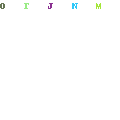Introduction:
Artificial Intelligence (AI) has made remarkable strides in various fields, and one of its most intriguing applications is the generation of realistic pictures. AI-generated pictures, also known as computer-generated images (CGI) or neural art, are created by algorithms that mimic the human brain’s ability to perceive and create visual content. In this article, we delve into the exciting realm of AI-generated pictures, exploring the technology behind them, their applications, and the implications for the future of art and design.
Understanding AI in Picture Generation:
At the core of AI-generated pictures is a subset of machine learning called Generative Adversarial Networks (GANs). GANs consist of two neural networks – a generator and a discriminator – working in tandem. The AI 聊天機器人 generator creates images, while the discriminator evaluates them for authenticity. Through an iterative process, both networks improve their performance, leading to the generation of increasingly realistic and diverse images.
Applications of AI-Generated Pictures:
- Art and Creativity: AI-generated pictures have found a place in the art world, challenging traditional notions of creativity. Artists and designers use AI algorithms to create unique and thought-provoking visual content. The technology enables the exploration of new styles, shapes, and color palettes, often pushing the boundaries of conventional artistic expression.
- Film and Entertainment: In the film and entertainment industry, AI is employed to generate stunning visual effects and virtual environments. This technology facilitates the creation of lifelike characters, fantastical landscapes, and immersive scenes that captivate audiences. AI-generated pictures contribute to the seamless integration of CGI in movies and video games.
- Fashion and Design: AI plays a pivotal role in the fashion and design sectors, aiding in the creation of innovative patterns, textures, and styles. Designers use AI-generated pictures to explore fresh design ideas and predict future trends. The technology has the potential to revolutionize the fashion industry by streamlining the design process and reducing time-to-market.
- Medical Imaging: In the field of medicine, AI-generated images assist in medical imaging and diagnostics. These images can simulate various medical conditions and aid in training healthcare professionals. Additionally, AI algorithms enhance the clarity and accuracy of medical imaging, contributing to more precise diagnoses.
Ethical Considerations:
While the capabilities of AI-generated pictures are impressive, ethical considerations come to the forefront. Questions about ownership, copyright, and the responsible use of AI-generated content arise. Striking a balance between creative exploration and respecting intellectual property rights is crucial as the technology continues to evolve.
Future Perspectives:
As AI continues to advance, the future of AI-generated pictures holds exciting possibilities. The technology could revolutionize content creation across various industries, influencing the way we perceive and interact with visual media. Ethical guidelines and regulations will likely play a crucial role in shaping the responsible development and deployment of AI in picture generation.
Conclusion:
AI-generated pictures represent a captivating intersection of technology and creativity, offering new avenues for expression and exploration. From art and entertainment to healthcare and design, the impact of AI in generating realistic and imaginative images is undeniable. As we navigate this evolving landscape, it is essential to consider the ethical implications and ensure that AI contributes positively to the world of visual content creation. The journey into the realm of AI-generated pictures is just beginning, and the future promises even more astonishing developments.
